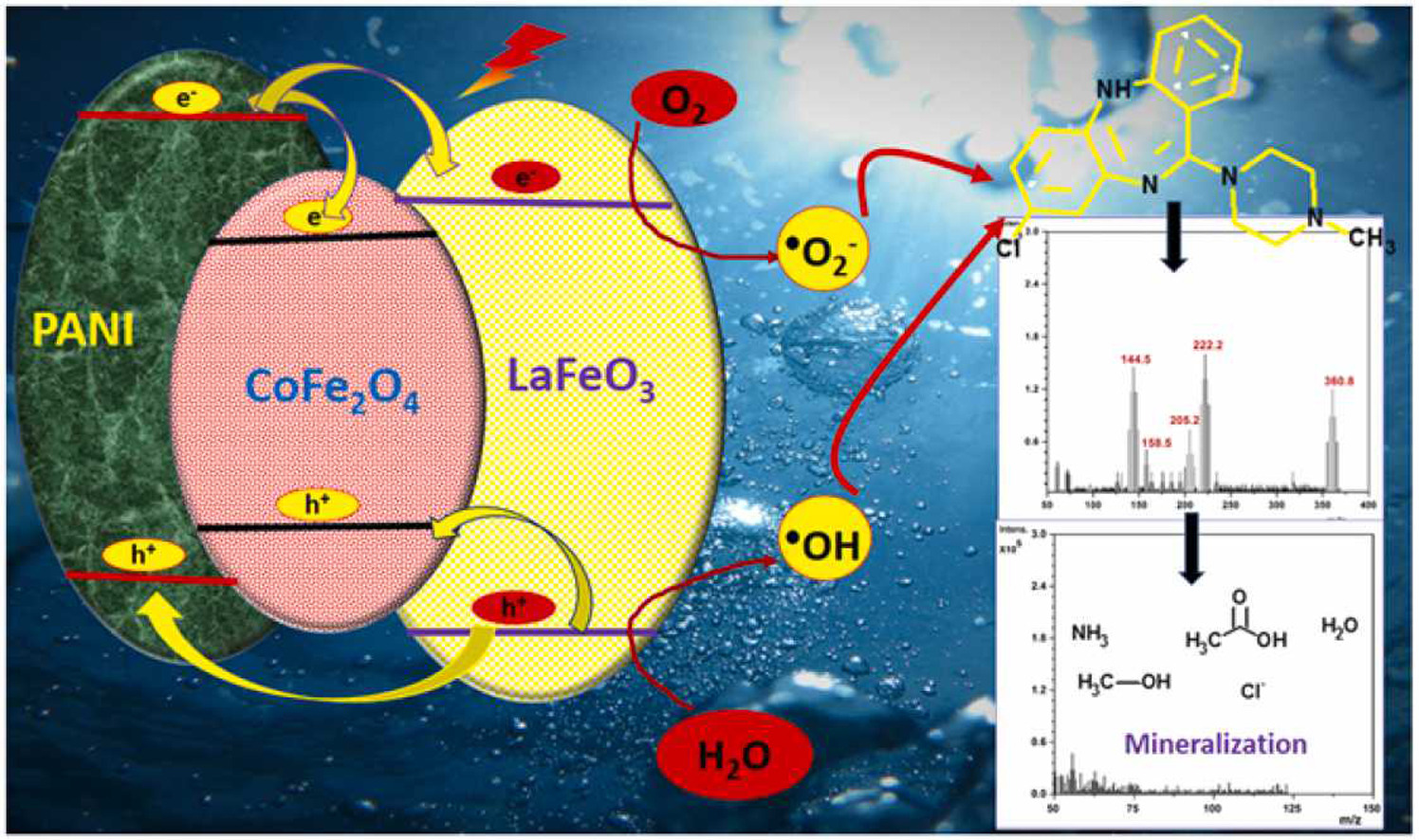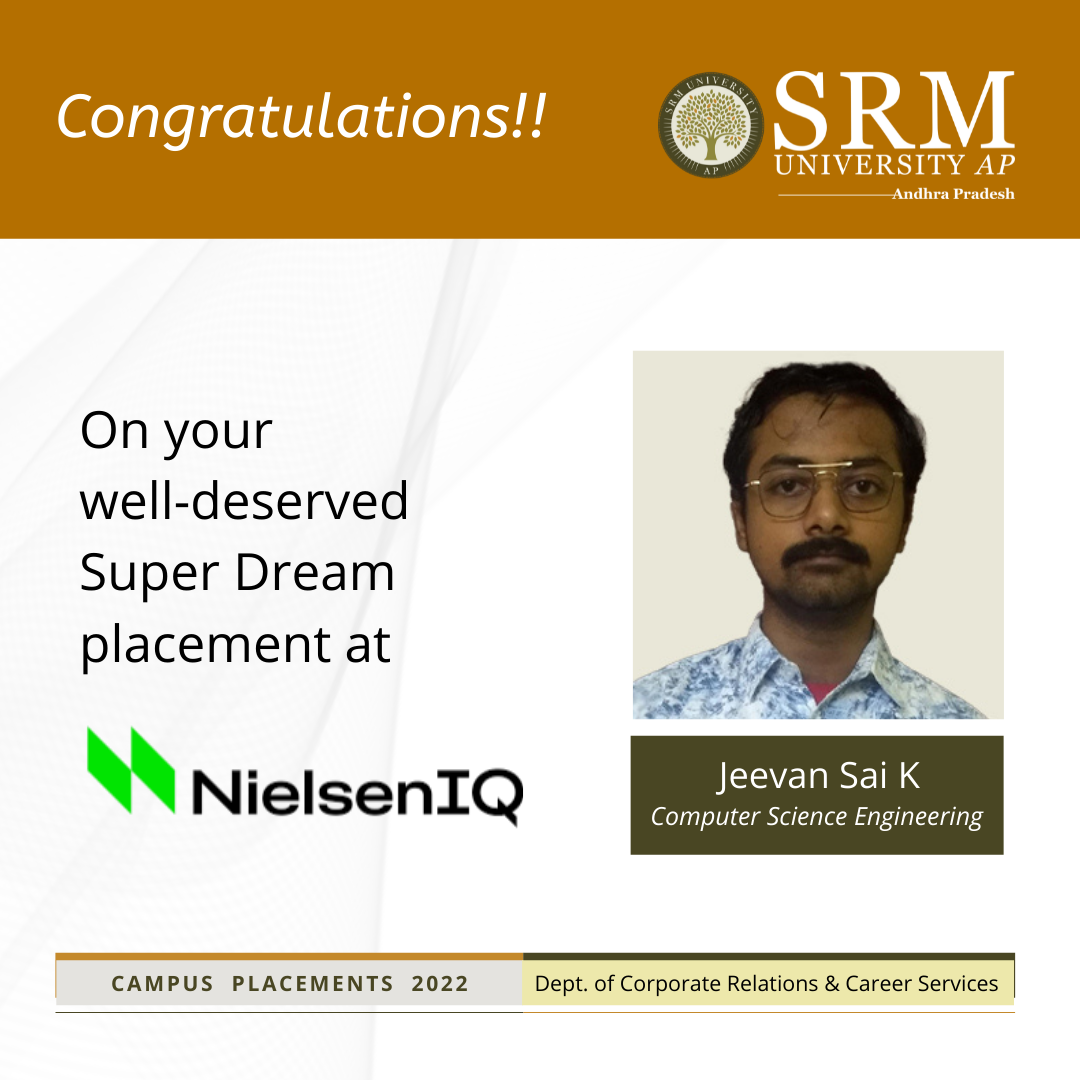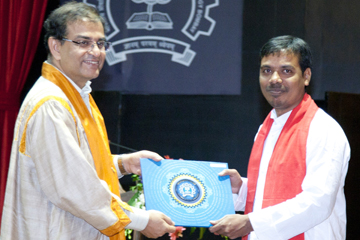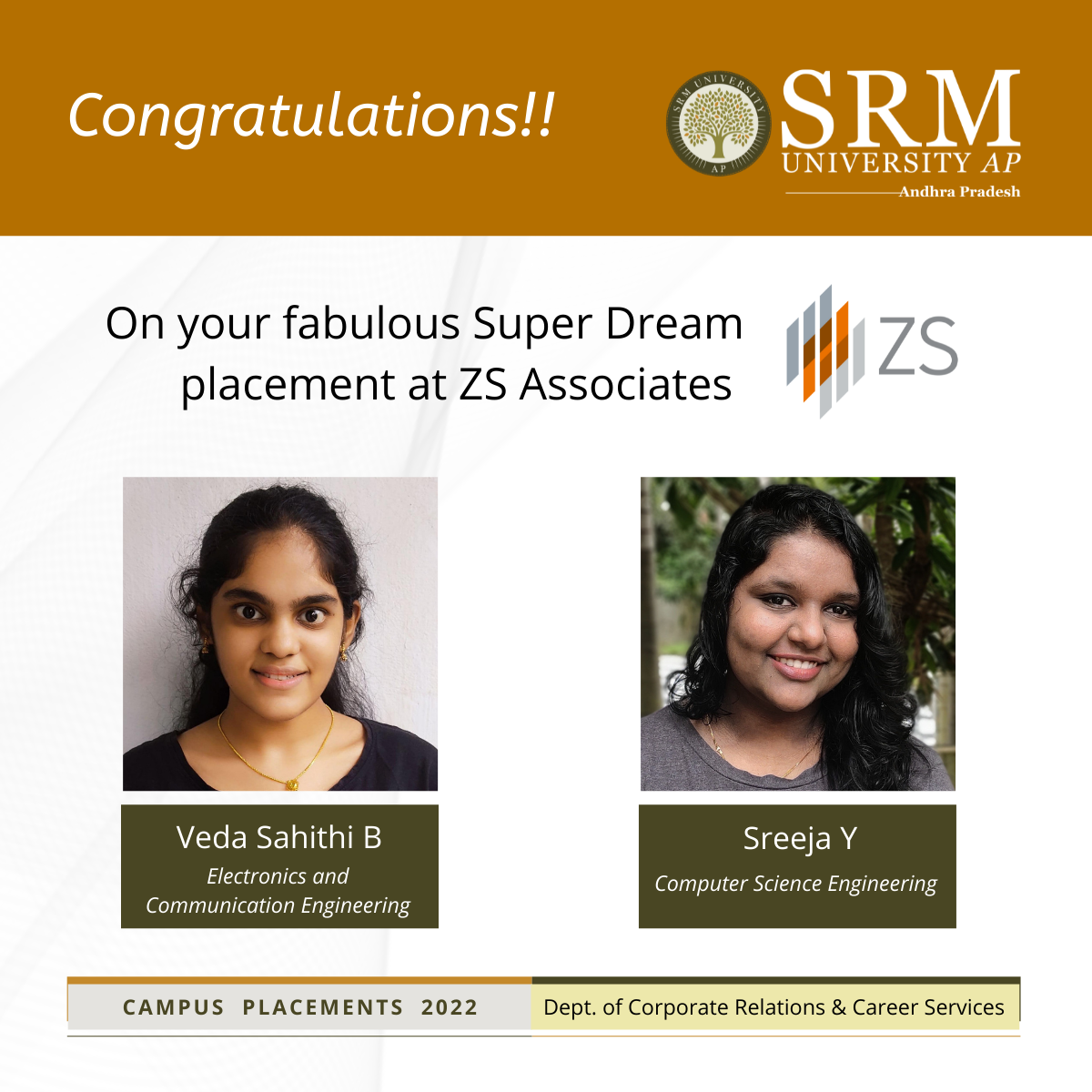Heterojunction photocatalyst for the degradation and mineralization of pharmaceutical effluent: Clozapine
 A research paper titled “Robust visible light active PANI/LaFeO3/CoFe2O4 ternary heterojunction for the photo-degradation and mineralization of pharmaceutical effluent: Clozapine” has been published by Dr Lakhveer Singh from the Department of Environmental Science at SRM University – AP, as a co-author, in Journal of Environmental Chemical Engineering, having an Impact Factor of 5.90.
A research paper titled “Robust visible light active PANI/LaFeO3/CoFe2O4 ternary heterojunction for the photo-degradation and mineralization of pharmaceutical effluent: Clozapine” has been published by Dr Lakhveer Singh from the Department of Environmental Science at SRM University – AP, as a co-author, in Journal of Environmental Chemical Engineering, having an Impact Factor of 5.90.
Clozapine (CZP) is a second-generation antipsychotic medicine prescribed for the treatment of resistant schizophrenia. The reported side effects of CZP includes cardiometabolic, orthostatic hypotension, tachycardia, seizures, myocarditis, weight gain and obesity. In this research, a novel magnetic ternary PANI/LaFeO3/CoFe2O4 (PLC) heterojunction photocatalyst was developed for the degradation and mineralization of pharmaceutical effluent: Clozapine. The photocatalysts were found to be re-usable for 5 consecutive cycles.
This work has been in collaboration with Central University Jammu. The present study has a new insight into the development and fabrication of efficient ternary heterojunction towards promising application prospects in wastewater remediation.
Dr Lakhveer Singh is an Editorial Board member of the Journal of Biomass Conversion and Biorefinery – Springer (I.F. 2.60) and a Guest Editor for Bioresource Technology Reports- Elsevier.
Read the full paper here: https://doi.org/10.1016/j.jece.2021.106159
- Published in Departmental News, ENVS News, News, Research News
K Jeevan Sai from CSE lands in NielsenIQ with 11.79 LPA
 Kanaparthi Jeevan Sai, a B Tech final year student from the Department of Computer Science & Engineering, has secured an exciting job offer with an annual salary package of 11.79 lakhs from NielsenIQ, an industry leader in data points, detailed intelligence, and solutions. He will join the organisation as a full-time Java Software Engineer and work from the Chennai location.
Kanaparthi Jeevan Sai, a B Tech final year student from the Department of Computer Science & Engineering, has secured an exciting job offer with an annual salary package of 11.79 lakhs from NielsenIQ, an industry leader in data points, detailed intelligence, and solutions. He will join the organisation as a full-time Java Software Engineer and work from the Chennai location.
NielsenIQ Consumer LLC is a dream destination for students who specialize in core areas of engineering. For the first three years, the university provided the students with the basics of programming, technical languages, data structures and algorithms. And later in the final year, the placement cell designed student-specific intensive training for all students aspiring for high-paying jobs. The training also covered all the possible model questions for coding rounds and discussed the pattern of previous years.
Jeevan Sai says that the projects need to be presented according to the company and it is important that the resume is well-written and simple. “Group discussions and some of the sessions which helped us to improve our personal and interview abilities and public speaking were arranged by the Department of CR&CS in association with Barclays (also a company). These and were led by industry experts. I thank the placement department for being very active throughout the placement season and clearing our doubts effectively, “Jeevan Sai stated.
- Published in CR&CS, CR&CS NEWS, CSE NEWS, Departmental News, News, Students Achievements
Dr Balaga Mohana Rao receives Best PhD Thesis award from IIT Bombay
 Dr Balaga Mohana Rao, Assistant Professor from the Department of Economics has been awarded the best PhD thesis award in the 59th IIT Bombay convocation held on August 07, 2021. The thesis titled The Early Warnings of the Impending Currency Crises and the Ensuing Macroeconomic Costs aims to develop an Early Warning System to identify the Currency Crises that would help in preventing an impending crisis and also in mitigating the devastating aftermath effects if that occurred.
Dr Balaga Mohana Rao, Assistant Professor from the Department of Economics has been awarded the best PhD thesis award in the 59th IIT Bombay convocation held on August 07, 2021. The thesis titled The Early Warnings of the Impending Currency Crises and the Ensuing Macroeconomic Costs aims to develop an Early Warning System to identify the Currency Crises that would help in preventing an impending crisis and also in mitigating the devastating aftermath effects if that occurred.
The financial crises have enthused a huge theoretical and empirical debate in current times due to their recurrent nature in the history of economics. To highlight the importance of an economic crisis among various sections, Kaminsky et al. (1998) quote Kindleberger (1978) saying that academics are interested in a crisis as they have had a history of fascination for the crises, policymakers are interested because they want to prevent the crisis, and financial market participants are interested as they can make money out of it. The financial crises can be divided into two broad categories—currency and sudden stop crises, and debt and banking crises. The currency crises have not only swept away Argentina (2001), Brazil (1998–1999), Latin America (the 1980s), Russia (1998), Southeast Asia (1997) and UK (1992) (to name a few) but they also have caused serious economic adversities to India and BRICS in the recent past. A currency crisis encompasses one of the following four features or a combination of them owing to a speculative attack—both successful and unsuccessful attacks—on a currency: A sharp depreciation of a currency (possibly followed by devaluation) and/or huge depletion of foreign exchange reserves or an increase in interest rates by the central bank or imposing restrictions on capital flows. In this context, Dr Balaga Mohana Rao’s thesis focuses on developing an early warning system to identify the impending crises, finding the common determinants of currency crises and the aftermath effects on macroeconomic indicators.
“One may wonder why the crisis should be prevented or mitigated. The reason is that a full-blown crisis will not be just confined to the foreign exchange market or some other segment, but it will affect the whole economy” Dr Balaga said. He plans to extend his PhD work on Currency Crises and see it in the context of the International Price System.
- Published in Departmental News, Economics Current Happenings, Economics News, News, Research News
Final year students get placed in ZS Associates
 Bandi Veda Sahithi from the Department of Electronics and Communication Engineering, and Sreeja Y from the Department of Computer Science Engineering have been placed at ZS Associates with an exciting CTC of 14.35 LPA.
Bandi Veda Sahithi from the Department of Electronics and Communication Engineering, and Sreeja Y from the Department of Computer Science Engineering have been placed at ZS Associates with an exciting CTC of 14.35 LPA.
Students started their preparation two months prior to the month of placements (approximately April-May and placements started in July). Following a disciplined timetable, and the CCC training given by the university, students have achieved their dream job offers! As Sreeja Y is a Computer Science Engineering Student, she mainly focused on DSA, DBMS, OOPs, OS and Aptitude (sources she used to prepare are Geekofgeeks, YouTube, Hackerrank, Leetcode for coding, W3schools).
The Curriculum for placement provides intensive training for 1 and a half month where the students receive CCC training, Domain training (TIME), and Aptitude training. The CCC Classes helped students understand DSA concepts and apply those concepts in coding. In the Domain training students were taught DSA, CN, OOPs, OS and it helped them further in SQL, DBMS concepts.
Sreeja expresses her gratitude for the guidance, training and sources of knowledge she received from SRM University-AP. “Approximately 75 companies lined up for recruitment in a month. Placement Cell really gives us great and wide opportunities to achieve our goals.” “The placement cell is a wonderful interactive platform that connects various companies with the university, providing abundant opportunities”, added Veda Sahithi.
- Published in CSE NEWS, Departmental News, ECE NEWS, News, Students Achievements

